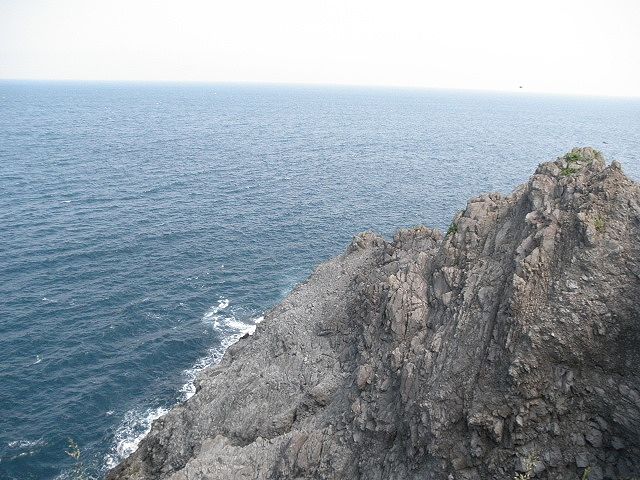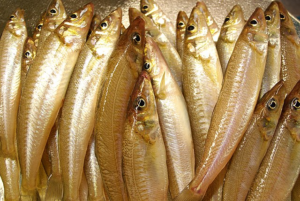Yellow Amberjack from Rocky Coast; Trophy for Iso Anglers
Amberjack is very familiar fish in some areas. Greater amberjack (Seriola dumerilli) is in subtropical or tropical seas and oceans (northern most place is southern Japan and in southward Tasmania). In the Atlantic ocean, there is Lesser amberjack (Seriola fasciata). Also, so-called Pilot fish or Banded rudderfish (Seriola zonata) is under the same family. In Asia and pacific coasts, we have Yellow Amberjack (Seriola lalandi, called Yellowtail kingfish in Australia), as one of the biggest species in this family.
This Yellow amberjack is one of the dream fish for anglers in Japan. It is a great target of jigging, boat fish with bait, as it is so in other countries. But in Japan, on top of these methods, this fish is an important trophy in Iso (rocky coast) fishing with the traditional way of fishing.
In this article, I will introduce this style of fishing, called Iso-kago fishing, after clarifying about this species. And in the end, we will see small bits of historical aspects on this fish.
Species and distribution
Yellow amberjack is called Hiramasa in Japanese. As briefly described above, this fish is living in warm waters in the southern and northern Pacific. The proper water temperature for it is 17 to 24 degrees celsius. Since the warm currents flow along Japan, Yellow amberjack is coming up to the coasts of Japan.
It lives along rocky shores or reefs that are washed by warm oceanic water. In Japan, it can be seen even in Hokkaido, but since its preference on warmer temperature, middle and western Japan are the popular areas. Such areas are; Izu peninsula, Izu islands, Kyushu island, Shikoku island,and the southern part of the Japan Sea coast (Sanin region).
Its spawning time is from spring to summer, laying eggs along the coast. It grows up to 30 to 40 cm in one year. Young fish are forming schools, but adults are living alone. The record of the biggest size was 170 cm, 49.5 kg, taken by offshore casting (pencil) (details are in this site, in Japanese). It is said that the fish had lived more than 10 years.
Hiramasa is carnivorous, and feeding on smaller fish (Jack mackerel, Pacific mackerel, Sardine,) squids (Japanese common squid, Swordtip squid) and crustaceans.

In Japan, there are three species of amberjack, Hiramasa (Yellow amberjack), Buri (Japanese amberjack) and Kanpachi (Greater amberjack), available for angling. Though Hiramasa is one of the important targets in Iso fishing, the other two are not. Buri and Kanpachi are very attractive fish in boat fishing and offshore jigging, in Japan.
Fishing for Hiramasa
In Iso (rocky shore) fishing using bait, there are mainly two styles. One is Iso-kago (literal meaning is rocky shore basket) and another is live bait fishing.
Iso-kago fishing style is using tackles like below image.
It involves casting, and spinning reel tackle is mostly used. The rod is a speciality rod, of about 4.5 to 5.1 m, in parabolic action with a very strong butt power. Though it needs to have the sensitive tip part, it must have very strong lifting power. As for the main line, monofilament nylon of 12 gou thickness (0.60 mm), 200m length is required.
As the name of this fishing style tells you, it uses the feeder basket, to hold the krill chum.
It works to carry the chum to the spot, and it turns the basket side down when it is on the water. As a variation, there is a special feeder basket, called a turning basket (or Taru-kago, Barrel basket).
It works as a float, too. This barrel shape has a hollow inside, and the down end is netted. When in use, the krills are filled inside this hollow. Your main line connects to this barrel with a slider swivel.
When you cast, the float is pulled at the highest part of the wire, to keep the krills. After It touches water, the barrel floats, being sinker side down. At this stage, you can pull your rig to place it in a targeted spot, without spilling chums. When you are at the spot, you wait until your rig is sinking enough. While your main line slider is at the lowest part of the wire, you jerk your rod to let krills be free.
What are needed further in this rig are additional floats (or maybe split shot) to control the sinking speed of hooked bait and to gain enough water resistance to catch the current. It is the key to coordinate the flow of hooked bait and that of chum krills. Hook leader is also 12 gou (0.60 mm thickness). Since this fishing is drifting the bait and it has less risk of snagging, the thickness of the main line and the leader can be the same. Rather, maximizing the total strength is important. Preference of hook is strong, short shanked, thick-wired Iseama style hook. (for details about hooks, please refer to my blog on hooks.) For the bait and chum, krill is mostly used.
Basic procedure of fishing is simple. First, you place krills in the basket, then you cast out. After your rig is on the water, take the slacked line wind up, to give jerking several times to release the krills. The next step is to start releasing your line gradually, to send your hooked bait with the cluster of chum krills. It is very important to imagine how they flow inside the water, and how well you can coordinate your bait with it.
Next style of fishing is live bait fishing. For bait, the most popular fish is the Jack mackerel, Mackerel scad and Pacific mackerel. And depending on the area and availability, other fish are used.
The heaviest version of this live bait fishing is shown in the image below.
Both spinning reel and conventional reel are used. The key point in its reel is to hold enough line and power of winding. The thickness of the main line is 8 to 14 gou (0.45 to 0.62mm), and the length is minimum 150 m. It uses a float to know the approximate position of the bait. In this image, the standing type float is used, but round line through type is also used.
The hook leader is wire of #45. The hook is called Ishidai type, which is similar to the Iseama shape with thicker wire.
This live bait fishing is more likely to get bigger fish.
Hiramasa and Japanese people
The word Hiramasa literally means ‘flat and parallel pattern.’ Hira means that something is flat. It may come from the fact that Hiramasa has a flatter shape compared to other amberjack species. Masa comes from the term for wood patterns. For a wood material, the wood pattern that has many lines parallelly is called masa-me, or masa pattern.
There are not so many historical records about Hiramasa. Since Hiramasa and other amberjack species share similar living spaces, I imagine the commercial fisherman was treating these as the same fish. They were able to differentiate the tastes, but this difference might be treated only as a difference coming from the environment.
While there is no record of Hiramasa, we have a lot of records about Buri (Japanese amberjack). This fish is more accustomed to colder water, and this caused our ancestors to see more of it than Hiramasa. The Buri was mentioned in the record of Maeda domain (current Himi city), 1595, shortly before the Edo period. It said that the government of this domain sent the salted Buri to Kyoto. Until then, Buri (or Hiramasa) was not transported to big cities. I am sure it was fished and consumed locally.
According to the record on fishing gears written in 1912, Buri was caught with a whip rod of 5.4 m, attached line of 75cm with a lure at the end. The fisherman of that time beat the surface with the lure, and the fish came up to attack the lure. Obviously, the top water game was done by that time.
The modern style was made possible with monofilament lines, long and strong rod and reel. These prerequisites were met with the accessibility of krill (1970’s) and this style shown in this article was started. (The detailed information about krill’s history is mentioned in my blog about sabiki.)
Some Japanese anglers say that we have smaller fish in Japan than other countries. But please be careful. It is just an attitude coming from humility, one of the Japanese characteristics.
You now know it is not really true, as you read about Hiramasa. In our backyard, we have (or are hiding) more big fish to entertain anglers!

